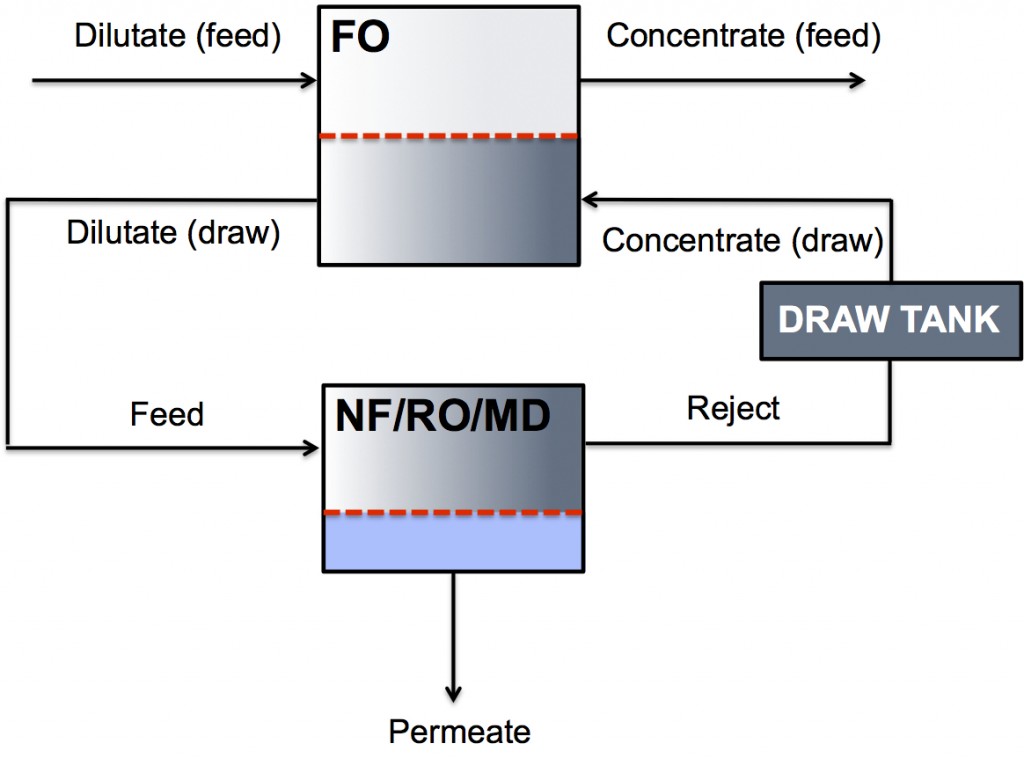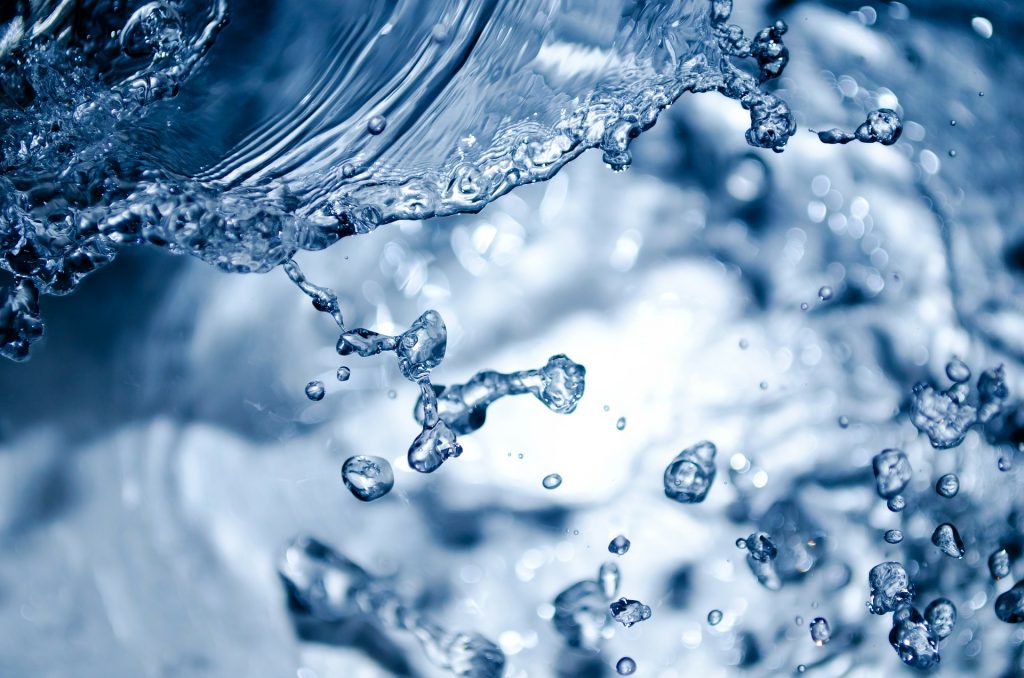- Forward osmosis is not dead – interview with leading water consultant Walid Khoury - August 30, 2020
- Listing of major commercial & academic FO players on ForwardOsmosisTech - April 12, 2020
- 0.26MGD FO-SWRO Hybrid for seawater desalination achieves 25% energy reduction compared to MF/SWRO - December 14, 2019
General classification of forward osmosis systems and their applications
FO systems can be divided into two broad categories, namely stand-alone FO systems and hybrid FO systems. Here, hybrid FO systems are described in more details.

In a hybrid FO system, as illustrated schematically above, the outputs are a concentrated feed solution and permeate consisting of reusable water (potable or non-potable depending on the design of the system). In a hybrid FO system, the FO part still functions as an energy-efficient water extractor; extracting water from a feed stream, which is difficult (=expensive) to treat with traditional membrane technologies, to a draw stream that is considerably easier (=less expensive) to treat when it is diluted by the FO process.
Seawater desalination systems for production of potable water
In one large-scale example of a hybrid FO system application, the feed stream is a high volume source of waste water such as municipal waste water or urban run-off water and the draw stream is seawater. During operation, the FO sub-system extracts fresh water from the waste water stream, thus reducing its volume, and at the same time the seawater draw is diluted to a point where it can be desalinated by a low pressure brackish water RO (BWRO) system to produce potable fresh water permeate.
Hence, the economical benefits of using a hybrid FO/BWRO system to dilute seawater and at the same time concentrate a high volume source of waste water, include:
- The diluted seawater requires less energy to be desalinated
- The waste water has been reduced in volume, saving costs of transporting the waste water to subsequent treatment facilities
Waste water treatment systems for waste water reduction and parallel production of reusable process water
In another, more specialized, example of a hybrid FO system application, the feed stream is waste water with high amounts of total suspended solids (TSS) and other difficult-to-treat pollutants and the draw stream is tailored for the given application. Waste water with high TSS is difficult to treat with traditional pressure-driven membrane technologies due to continuous membrane clogging (fouling) and ensuing membrane performance decrease. In order to treat high TSS waste waters with pressure-driven membranes, pre-treatment processes are necessary, which further increase CAPEX and OPEX costs. However, forward osmosis membranes are far less prone to fouling, which makes them ideally suited to treat high TSS waste water. During operation, the FO sub-system extracts fresh water from the high TSS waste water stream, thus reducing its volume, and at the same time the tailored draw is diluted and fed through a second membrane sub-system to produce potable fresh water permeate and a re-concentrated draw solution.
Hence, the economical benefits of using a hybrid FO/(RO, NF, or MD) system to reduce volumes of difficult waste water, include:
- Implementing low-fouling FO membranes as the first barrier towards the waste water reduces both the need for pre-treatment and the O&M (operation and maintenance) costs of running the pressure-driven membrane sub-systems since they now operate on lower fouling streams
- The waste water has been reduced in volume, saving costs of transporting the waste water to subsequent treatment facilities
- The permeate can be re-used for industrial processes
Finally, by tailoring the rejection properties of the FO membrane sub-system as well as the other sub-systems of the hybrid, it is also possible to recover low molecular weight solutes such as NaCl from the feed stream. This is especially of value in the textile industry where large amounts of salts are otherwise lost in waste water streams.


